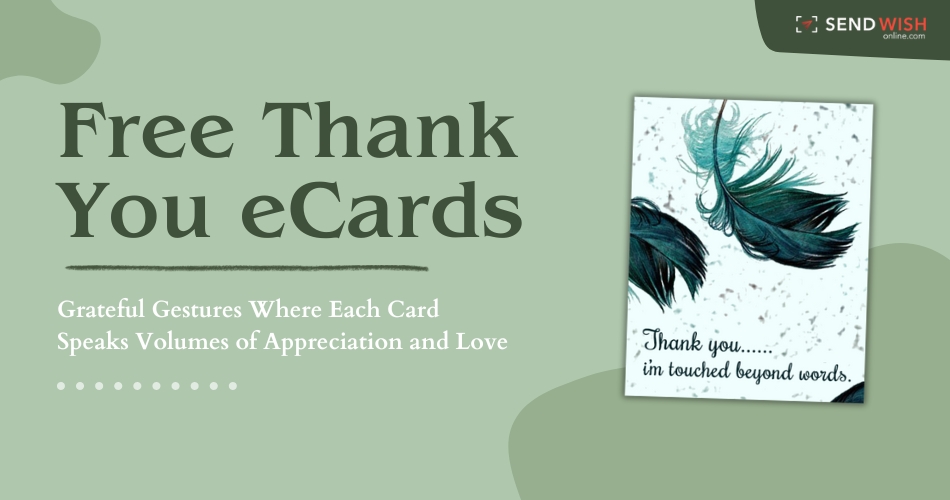In today’s fast-paced, digital world, the art of writing and sending thank you cards can feel like a lost tradition. However, this simple gesture can go a long way in expressing your appreciation and strengthening personal and professional relationships. As etiquette expert Emily Post once said, “Manners are a sensitive awareness of the feelings of others.” Sending a thoughtful thank you card is a meaningful way to show someone you care.
When to Send a Thank You Card
There are many life events and occasions that warrant a handwritten thank you card:
-
Gifts – Whether it’s for a birthday, holiday, wedding, baby shower, or any other gift-giving event, send a thank you note to the giver. This shows you appreciate their thoughtfulness and the time they took to select a gift for you.
-
Acts of Kindness – Did someone do you a favor, provide a recommendation, or go out of their way to help you? Sending a thank you note is a polite way to acknowledge their efforts.
-
Hospitality – If you were a guest in someone’s home, whether for a party, overnight stay, or meal, send a thank you note to the host/hostess.
-
Job Interviews – Following a job interview, send a thank you note to each person you interviewed with. This keeps you top-of-mind and demonstrates your professionalism.
-
Professional Milestones – If you recently received a promotion, award, or recognition at work, send thank you notes to those who supported you, such as colleagues, mentors, or supervisors.
-
The general rule of thumb is to send a thank you cards within two weeks of the event or gesture. This ensures your appreciation is delivered in a timely manner.
How to Write a Thank You Card
When crafting your thank you card, keep these tips in mind:
-
Handwrite the note – Avoid typed or printed notes, as a handwritten message feels more personal and heartfelt. Use a nice pen and quality stationery.
-
Be specific – Don’t just say “Thank you.” Mention the specific gift, favor, or event you are grateful for. This shows you paid attention and valued the gesture.
-
Express your gratitude – Let the recipient know how their actions made you feel. For example, “Your thoughtful gift made my birthday so special” or “I am grateful for your recommendation, which helped me land my dream job.”
-
Keep it concise – Aim for 3-4 sentences. You want to convey your appreciation without rambling.
-
Add a personal touch – Consider including a small anecdote or memory related to the occasion. This adds a warm, human element to the note.
-
Proofread – Check your spelling and grammar to ensure your message is polished.
Boost Morale and Appreciation
Handwritten thank you cards are a simple, yet impactful way to make employees feel valued and recognized for their hard work. Receiving a personalized note of gratitude can go a long way in boosting morale and making employees feel appreciated by their managers and coworkers.
Improve Employee Engagement
Studies have shown that employees who feel their contributions are recognized and appreciated are more engaged and motivated in their work. Thank you cards help create a positive work culture where people feel their efforts are meaningful and rewarded.
Foster Stronger Relationships
Taking the time to write a thoughtful thank you note helps build stronger interpersonal connections between colleagues. It demonstrates that you’ve taken the time to acknowledge someone’s support or achievements in a personal way.
Reinforce Positive Behaviors
Sending thank you cards is an effective way to positively reinforce behaviors and actions you want to see more of in the office. It provides clear feedback to employees about what types of contributions are valued.
Improved Productivity and Retention
When employees feel appreciated, they are more likely to be productive, committed, and loyal to the company. Thank you ecards can help reduce turnover by making employees feel their work is meaningful and important.
Differentiation from Digital Communications
In an increasingly digital world, a handwritten thank you card can be a refreshing change of pace and stand out more than an email or Slack message. The personal touch carries more weight.
Improved Teamwork and Collaboration
Sending thank you cards can help foster a culture of appreciation and mutual support. When employees recognize each other’s contributions, it promotes a collaborative mindset where people are invested in each other’s success.
Enhanced Employee Wellbeing
Feeling appreciated and valued has been linked to improved employee wellbeing and reduced stress. Thank you cards can be a meaningful way to support mental health in the workplace.
Increased Customer Satisfaction
Employees who feel appreciated are more likely to provide excellent customer service. Thank you cards can indirectly boost customer satisfaction by motivating staff to go the extra mile.
Reinforcement of Company Values
Companies can use free thank you cards to emphasize and reinforce their core values and the types of behaviors they want to see from employees. This helps align the workforce around the organization’s mission and priorities.
Talent Recruitment and Retention
Potential job candidates are attracted to companies with positive work cultures. Thank you cards demonstrate a company’s commitment to employee recognition and engagement, which can be a competitive advantage in recruiting top talent.
Cost-Effective Reward Strategy
Compared to bonuses or other financial rewards, thank you cards are a very low-cost way to provide positive reinforcement. They maximize the impact per dollar spent on employee recognition.
Thank you cards are a timeless way to show your appreciation and strengthen connections. By following these etiquette guidelines, you can make a lasting impression and brighten someone’s day.





